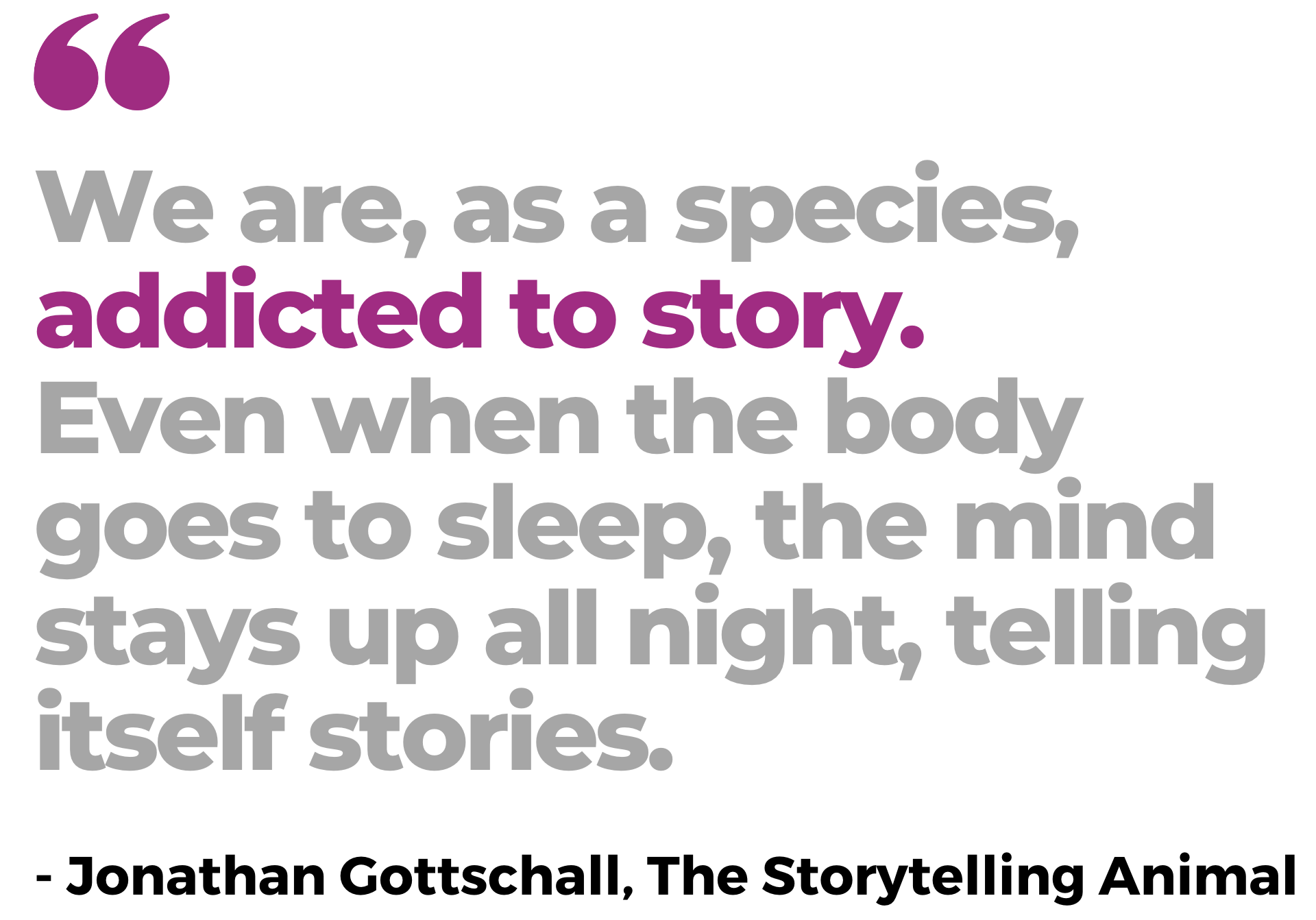| Editor's Note: This article is part of the Power of Patient Journeys series. In this series, we will illustrate four foundational ideas for creating and utilizing the compelling narratives of your patients. As the industry develops, we will continue to update these guides. You can keep up with those changes by signing up for our newsletter. Here are the parts: Part 1: Gaining New Patients Through Expert Storytelling Part 2: Solving the 3 Modern Content Problems Part 3: Six Questions to Determine if Patient Journeys Are Right for You Part 4: Choosing the Right Patients |
Table of Contents
Step 1: Start With Good Relationships
Step 2: Eliminate the Outliers
Step 3: Find the Stories
Step 4: Take Their Temperature
Step 5: Connect Them With The Pros
Alright, so you have decided that you want to pull the trigger and start telling a great story — the Patient Journey. But, who do you choose? How do I know which of my patients are a good fit? What if they don’t want to participate?
What if I asked and they are offended? What if they write a bad review? What if that review destroys my reputation? What if I lose my house? My marriage? My dog? My medical license? My BMW? My hair—
Alright, alright, deep breath. Relax. Don’t give in to the despair of “what ifs.” Here’s the bottom line: no one will be offended, and plenty of people will want to share.
It’s up to you to figure out which of those patients are the best fit. Luckily, you got us. So keep reading while you breathe into that brown bag.

We will level with you; if there is anything we marketers love in this big blue world, it’s a good funnel graphic. We will never pass up an opportunity to annoy our design department with another fancy, upside-down triangle to drive a point home.
Never.

In the case of the Perfect Patient Journey Funnel, though, you aren’t really getting a triangle. We won’t pretend to know whatever shape is up there — that is the design department’s job. But the more realistic funnel shape depicted above actually serves a purpose.

The goal of this particular funnel is not to eliminate your candidates down to one. Instead, our aim is to identify and convert as many patients into potential subjects as possible. Some elimination is necessary in the beginning, but as we move down the steps, the focus is less on paring down your options and more on capitalization, which is why this funnel doesn’t get all that narrow.
Step 1: Start With Good Relationships
Here’s a little sage advice from someone who is in no way qualified to give sage advice:
In marketing and life, all the important things include
surrounding yourself with good relationships.
So, let’s start there.
The work you do is impactful, more so than you might realize. Or maybe precisely as much as you realize. Either way, it doesn’t matter. What’s important is that you recognize the pool of people who are deeply grateful for the changes you gave them is probably Olympic-sized.
To kick off your Patient Journey content, you need to find the proverbial Michael Phelps in the crowd. Or even better, a plural group of Michael Phelps-es that you have developed positive, meaningful relationships with along the way.

Not everyone is going to be happy all the time. It’s a natural part of the medical field. But once you separate the people you have more profound standing with, you are off to a great start when it comes to getting started on your Patient Journey program.
To give you some ideas of how you can find the needle in the haystack, here are some steps you can take:
- Have your staff actively talk to patients about the Patient Journey. Casually mentioning it as they check in or are brought back to their room might pique some interest from some patients who you might not even have realized would be interested in participating.
- Ask your patients as part of the routine care process. If the doctor is directly discussing the patient journeys, it seems a little more personal and emotional than just some campaign that the practice is trying to put together. People appreciate being included, and you might be surprised to find how many people want to let their story be told.
- Make some fliers. We know it’s oldschool, but patients are used to checking out front desks for info, flyers, books or anything to preoccupy their time. A fun flier or posters around the practice will reinforce to your patients that this is something you are looking to achieve. It’s not like we are telling you to cycle through the Rolodex or anything.
- Do a social media/email campaign. It’s important to have an active and engaging digital marketing program. Using your social media platform and your email list to push the effort is a great way to both fill those content needs and find patients who would be interested.
- Bring it up during your next all-hands meetings. You are an awesome medical professional, so you probably surround yourself with other awesome medical professionals who have developed awesome relationships with awesome patients. Tap into their awesome experience and ask your team if they have any relationships they can call on with regulars for Patient Journey content.
Step 2: Eliminate the Outliers
Once you’ve identified a core group of patients you have a strong bond with, the next step is to get rid of the people who received care outside of what you usually provide. Typically, we want to focus on the procedures that you want to promote.
If you are the greatest Brazilian Butt Lift artist this side of the Mississippi, then let’s go ahead and find a patient who can talk about how great she feels in swimsuits for the first time. If you are a medspa that does 500 Botox injections per month, odds are we can find a patient to share how much more confident they are looking in the mirror every day.
In short, we have to target the niche group of people that will potentially become your patients. Our SEO team can help you a bit here if you are stuck — we have the data to help you figure out what people are interested in, what your most popular procedures are in the digital space, and even where your biggest opportunity for growth is.

Step 3: Find the Stories
We want to share some trauma with you that most writers have experienced at some point in their lives.
Early on in every writer’s career, we were drilled by a mentor, professor, editor or boss to “find the story” in whatever we were writing.
Why? Because despite the overconfidence of a fresh graduate or green writer, the actual story isn’t always on the surface.
A melodramatic retelling of actual events:
“Find the story!”
“This isn’t the story.”
“Come back when you have the real story.”
“Rework this entire thing and go get me the real story!”
“No one cares about this story. Go write me the real story!”
“IF YOU DON’T GIVE ME THE REAL STORY BY NOON, YOU’RE FIRED.”
“Great job finding the real story. You are doing a great job.”

Sure, Sally can tell us about how she had a breast augmentation performed and it made her feel more confident. This is technically a story, right?
Well, sure. It is a story, but it isn’t the story.

The story is about how Sally had avoided beaches and swimming pools her entire life because she was embarrassed about her breast size. She missed all of her best friend’s summer swim birthdays and never went to the beach bonfires because she didn’t want to stand out for not wearing a bathing suit.
But the summer after her breast augmentation, Sally straight-up Baywatch sprinted right up to the coast and dove straight into the salty water, wearing nothing but a two-piece and a huge smile.
The following week, she enthusiastically throws off her shirt to reveal a cute, yellow bikini she has wanted for years, just to wrestle her best friend into the pool on her 25th birthday.
Now that is the story.

Whether it is unresolved generational trauma passed down from writer to writer, Stockholm syndrome from the mentors we grew to love, or just simply because it works, writers continue to live by this advice long after the lesson was taught. When it comes to your Patient Journey program, our job is to do the same thing for your patients.
The more impactful and human the stories we write about your patients, the stronger of a bond potential patients will form with you and your practice even before they can step foot inside of it.
(And the more likely they will be to set up a consultation.)
How to Find the Story During Interviews
Here is a graph showing examples of how to change your questions up to get those valuable details out of the story:
| Good | Better | Best |
|---|---|---|
| Tell me about yourself. | What are your hobbies? | How were your hobbies and things that make you happy affected by your condition? |
| Why did you have your treatment? | How did your condition make you feel? | Did you ever feel limited or embarrassed by your condition? If so, how did that change after your treatment was complete? |
| What was it like to have your condition? | How did your condition affect all aspects of your life? | Can you recall a time when your condition held you back or made you feel self conscious? Have you been in any similar situations after your treatment? How different was the experience? |
| Tell me about your condition. | Was your condition difficult for you to live with? | How do you think your condition shaped your personality or beliefs? |
| How did others react to your condition? | Did your loved ones support you? | How did your condition affect your relationships with other people? Were there any instances that you can remember that you would like to share? |
Step 4: Take Their Temperature
No, no, no — Pull up the pants and put the thermometer away, doc; it’s a metaphor. The only vitals you need to check at this stage are whether your potential patient is interested in sharing their story or what would need to happen to make them feel comfortable enough to do so.
Some people are more private than others. They don’t necessarily want their name on the internet linked to whatever aesthetic procedure you provided them. Despite appearances, this isn’t a dead-end yet. In many cases, a simple pseudonym can get the job done.
We can do many things to protect someone’s identity and still tell their story. But at the end of the day, we know you want to respect the privacy of your patients and not pressure them into sharing anything they’d prefer not to.
Of course, there are plenty of other people who are happy to share all the details of their experiences. And in our experience, these people are much more common than those who might be too shy to share anything.
Step 5: Connect Them With Us
Unfortunately, there is no funnel for how to be a good Patient Journey writer. (Maybe we should make one.)
In the meantime, though, you can always reach out to us for help with the writing bit. In fact, it is kind of built into the process. Once you have decided on a patient who fits the bill, all you need to do is get them in contact with someone from our office.
Of course, they will need to sign a release that says they are willing to share their story, but that’s just a bit of quick paperwork that we can provide.
And from there, well, we can take care of the rest.
As usual, our educators are here to answer any questions you have, anytime, for free. Give us a call at (800) 949-0133 or schedule a one-on-one.
This marks the end of our P³ series. Don’t fret though, if you need more content, we produce it regularly. Sign up for our newsletter to make sure you never miss a beat. Or check out Parts 1, 2 or 3 of this series.





